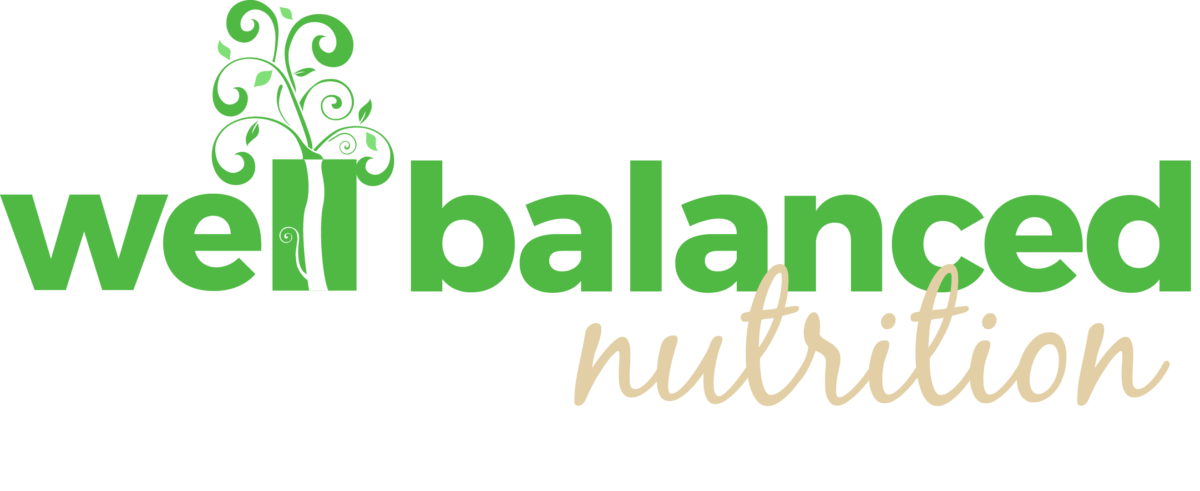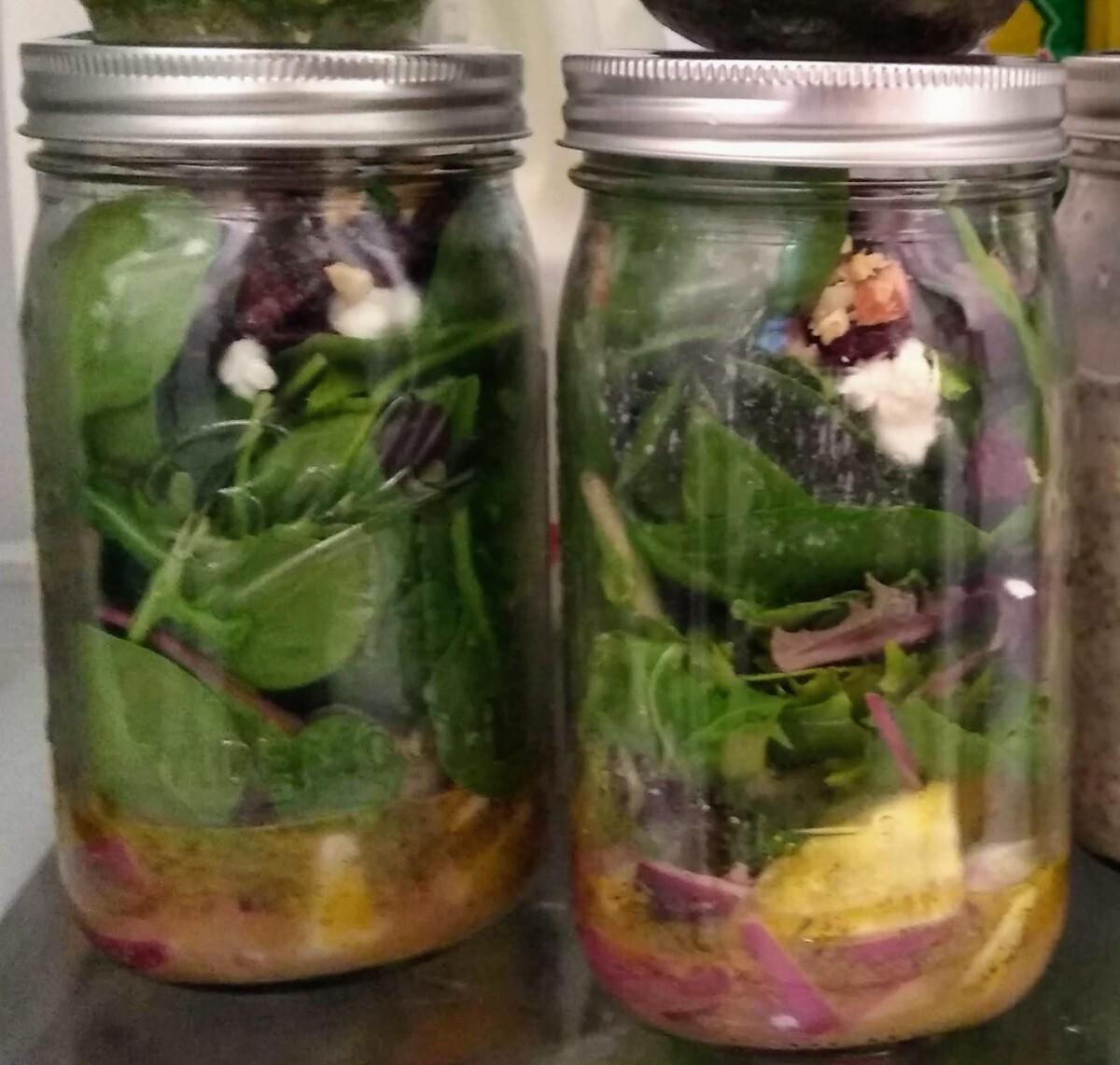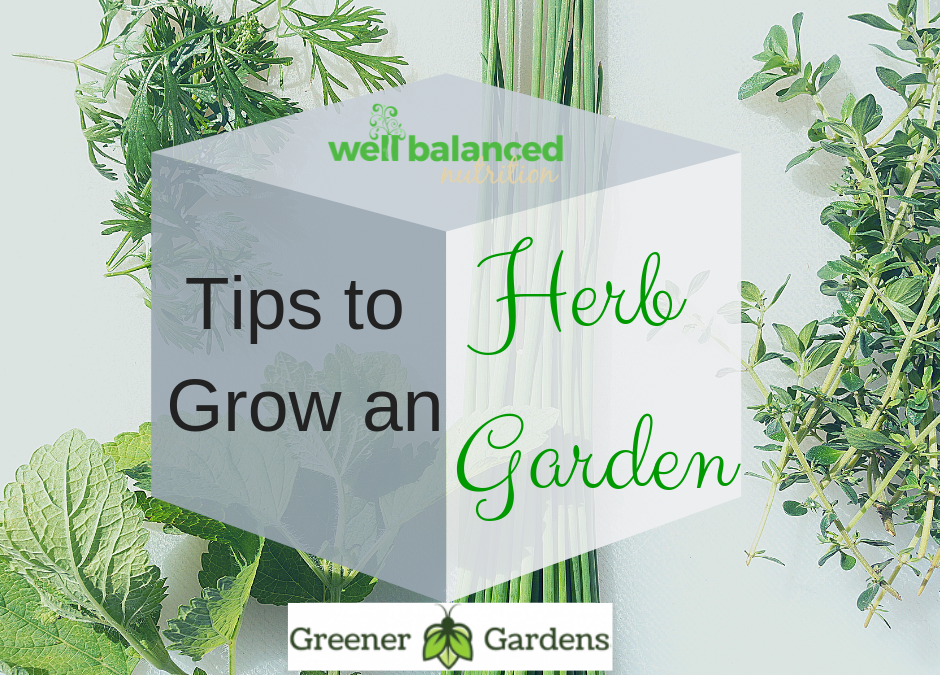
by Lucy | Mar 13, 2019 | Well Balanced Wisdom
Have you ever bought fresh herbs at the grocery, used a few sprigs, then found them rotting away weeks later in your produce drawer? Herbs add flavor and nutrition to any meal, but paying $5 for two stems of rosemary is an expensive and wasteful proposition. Meanwhile herbs can be some of the easiest and most rewarding plants to grow in your garden.
Getting started
If you don’t have a kitchen garden, herbs can be grown in a pot on a sunny windowsill in the kitchen. I prefer to tuck them in the ground or in a pot in a sunny spot outdoors, keeping in mind that different herbs have different needs. Mint and parsley, for instance, can take a bit of shade in the south and prefer more water. Other woody herbs like rosemary, sage and lavender will suffer from too much water and prefer a well-draining, sandier soil. In general, potted plants need more watering than those growing in the ground.
Many woody herbs are perennial, which means they can last for years. Some only last a season or two. Annuals like cilantro prefer cool spring weather, while basil needs the heat of summer. Parsley is a biennial in the carrot family and will flower and die in its second year. Don’t be surprised, though, if it reseeds itself!
How to use herbs
Once you have herbs readily available, you’ll find yourself reaching for a few sprigs for most any meal. Herbs are delicious in soups, salads, eggs, mashed potatoes and grains, breads, and meats…the list goes on. Besides making food more flavorful, various herbs can be packed with vitamins A, B, C and K. Many are rich in polyphenols, those anti-inflammatory compounds that can help protect against cancer, heart disease, Alzheimer’s disease, joint pain and other conditions.
Another good reason to grow herbs
Herbs also feed the bees and butterflies in your garden when they bloom. The caterpillars of the black swallowtail butterfly will feed on parsley and fennel, so I recommend putting in extra plants to share the bounty. If you’re not sure about your green thumb, start with one potted plant and grow from there. Even if it doesn’t survive as long as you hoped, you are sure to get plenty of enjoyment and use out of growing your own kitchen herbs.
About the Author:
Brandee Gruener
When she’s not blogging for Greener Gardens, Brandee Gruener is a freelance writer and editor who specializes in gardening, food and sustainable living. Brandee also offers consulting services to homeowners who would like to grow a greener garden.
Read more of my tips about sustainable gardening at www.growgreenergardens.com.
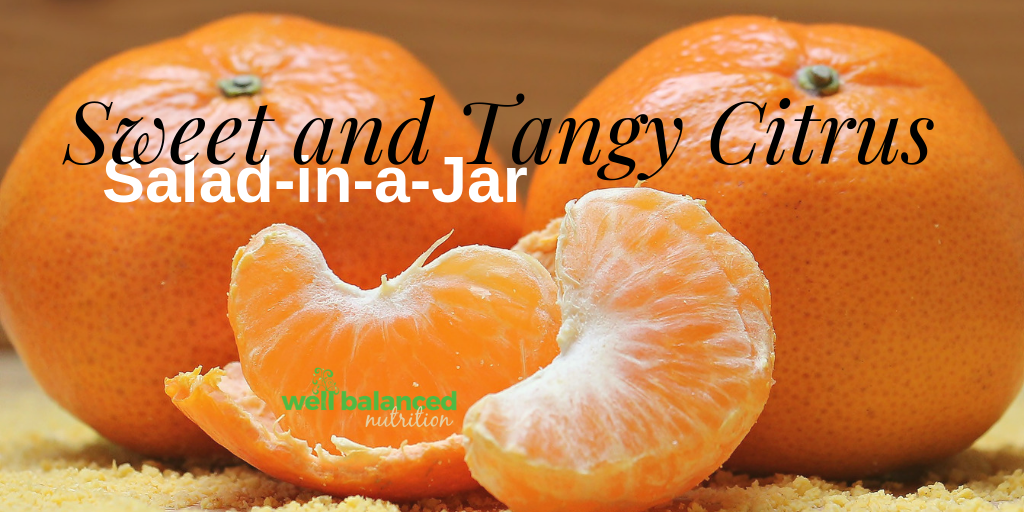
by Lucy | Feb 27, 2019 | Recipes and Meal Ideas
Assemble a salad-in-a-jar and you will thank yourself for it! During a busy week, you can easily grab your salad, dump into a bowl and start enjoying it in minutes.
Putting the salad in a glass jar with an airtight lid ensures it stays fresh for several days. Just be sure to keep your dressing away from your greens by layering your ingredients carefully.
There are many salad variations, but here is one from one of our Meal Prep Workshops that our clients love. It’s sweet, tangy, and satisfying.
If you are looking to complete your meal with a bit more protein, you can easily add more protein-rich foods such as tofu, boiled eggs, chicken or fish. These items are best kept out of the jar and added to the salad right before eating. If you have berries on hand, they go well on top of the salad also.
- 2 tablespoons olive oil
- 2 tablespoons orange juice
- 2 tablespoons lemon juice or juice of one lemon
- 1/2 teaspoon thyme dried
- 1 teaspoon Dijon mustard
- 1 teaspoon rice vinegar
- 2 teaspoon maple syrup
- 1/2 teaspoon salt
- 1/2 teaspoon pepper
- 1 small red onion chopped and divided in half
- 1 large orange peeled, chopped, and divided in half
- 5 cups mixed greens
- 2 oz goat cheese
- 2 tablespoons dried cranberries
- 2 Tablespoons chopped nuts
To make the dressing, combine the first 9 ingredients in a small bowl and mix thoroughly.
Pour half of the dressing in 2 large wide-mouth mason jars.
Add 1/2 chopped onion and orange slices into each jar.
Add 2.5 cups mixed greens to each jar.
Top each salad with 1 oz goat cheese, 1 Tbsp chopped nuts, and 1 Tbsp dried cranberries.
Close with airtight lid and store upright in the refrigerator for up to 5-days.
For additional protein, add grilled chicken, fish, boiled eggs or tofu.
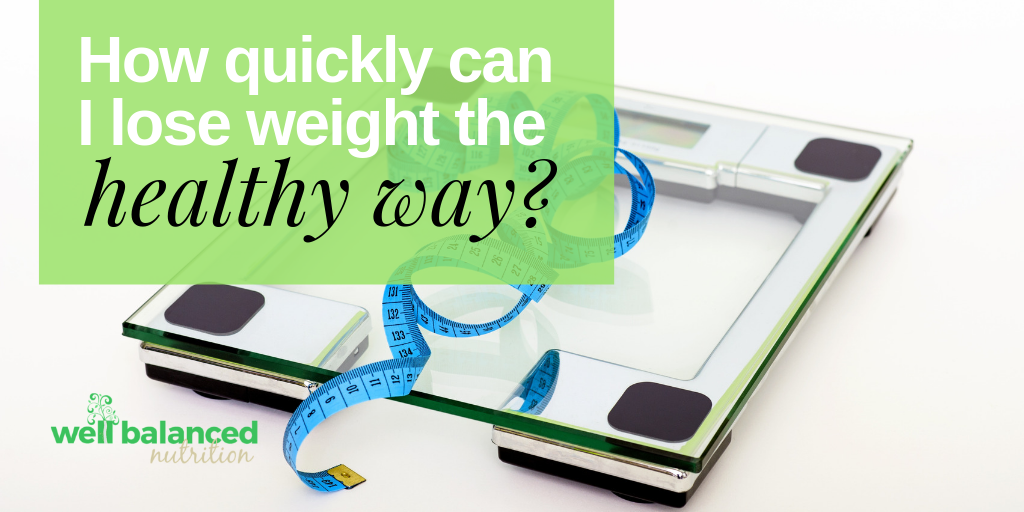
by Lucy | Feb 27, 2019 | Nutrition Questions Answered, Well Balanced Wisdom
Have you ever wondered… how do I lose weight fast?
You aren’t alone. Many people are searching for the magic pill or a secret sauce that can help them get the body they want – like by tomorrow. Unfortunately, drastic weight loss that is kept off is seldom attainable. In fact, if we look at research studies on weight loss (from various diets and methods) we find that roughly 80% of people who shed a substantial portion of their body fat will not maintain that degree of weight loss for 12 months.
What is a safe rate of weight loss?
The general recommendation is 1-2 lbs per week.* Slow and steady wins the race. Even at a slower rate, it is important to be wise about your approach and make changes that are more likely to last. Unfortunately, many people will regain some or all of weight loss regardless of how quick or slow it came off.*
What amount of weight loss is realistic and appropriate for health outcomes?
Research indicates that for people who are in the overweight or obese BMI category, a weight loss of 10% of their body weight over a 6 month period is appropriate.* This amount is likely to bring about improvements in blood pressure, blood cholesterol, and blood sugars. It’s debatable whether it is the weight loss or the healthy habits that one adopts to lose weight that really impacts health.
The best approach is wellness-focused not weight loss focused.
At Well Balanced Nutrition, we don’t recommend any trendy diets that promise to help you drop weight fast, but we do have a solution to help you feel better about your body. Our solution, the Well Balanced approach, is not just about the food you eat or the number on the scale. We want to see you healthy and happy, and we know you don’t have to drop 4 pant sizes to achieve that. By accepting yourself, improving your habits from a place of self-compassion, working on attainable action steps, embracing the journey and having some fun along the way, you’ll no longer need to strive for unrealistic ideals or fall for another fad diet attempt. Are you looking for solutions? Take the first step today.
*References:
- https://www.mayoclinic.org/healthy-lifestyle/weight-loss/expert-answers/fast-weight-loss/faq-20058289
- https://www.sciencedirect.com/science/article/pii/S2213858714702001
- https://www.nhlbi.nih.gov/files/docs/guidelines/ob_gdlns.pdf

by Lucy | Feb 21, 2019 | Nutrition Questions Answered
For Super Bowl weekend I was looking forward to eating chicken wings with celery, blue cheese dressing, and sweet potato fries. Then I woke up Saturday morning with a pit in my stomach knowing it was going to be “one of those days.” I can often tell when I wake up if I’m going to have and upset tummy that day. Typically, it starts with a lame bowel movement (sorry if that’s TMI) then it’s followed by low-grade discomfort and occasional nausea.
How do I know it’s a flare-up?
For me (Lucy), it’s been years of learning to listen to my body, tune in to my symptoms, and make adjustments. Most people feel awkward talking about their bowel movements (aka poop); however, that can often be a good indicator of how things are going in your digestive system.
Did you ever watch when Oprah would feature Dr. Oz who introduced Americans to what our intestines look? I’ll never forget, I was a sophomore in college and my mom called me geeking out because Dr. Oz was on TV talking about poop. At that time, this had become a regular topic of conversation because part of learning about food and nutrition is also learning about what comes out the other end.
Anyway, after 2012, and the unfortunate stomach virus, my digestive system changed and so did my poo. Also, one of my initial symptoms included sharp stabbing pains in my gut after I ate almost anything (thank goodness for oatmeal). Nowadays, in a flare-up I feel puffy, bloated, and extremely full after eating even a small meal. Sometimes I get a low-grade headache and nausea. Mostly, it’s just plain uncomfortable. It may take away the desire to eat regular meals and snacks.
By the way, IBS cannot be self-diagnosed. It is a functional disorder that primarily effects the bowels and includes various symptoms including irregular bowel movements, bloating, and/or nausea. There are also tests that can eliminate other potential diagnoses, such as celiac disease and Crohn’s disease.
Every body is different.
The other day while discussing IBS-like symptoms my client, Susan*, talked about the “ickiness” of discussing this problem in public. Susan had decided to do the low FODMAP diet to find out which foods were triggering her symptoms. She recognized most people don’t want to talk about what’s happening at the other end of your digestive system. Susan mostly referenced the pain and discomfort that comes with eating trigger foods. She also talked about her own symptoms, which are different than mine, and included a “gurgle-y stomach,” which was her first indicator that something that did not sit well in her gut.
Start with noticing
If you are suspicious about irregularity or other pain and discomfort in your digestive system we recommend starting to notice when, how often, and what the symptoms are. If you’re so inclined, I always recommend food and symptom journal to start to give you a better idea and understanding of how food and symptoms may be connected.
If you’re tired of feeling crappy and ready to find out ways to get on the path of healing contact us. We’re happy to help 🙂
*Name changed to protect privacy.

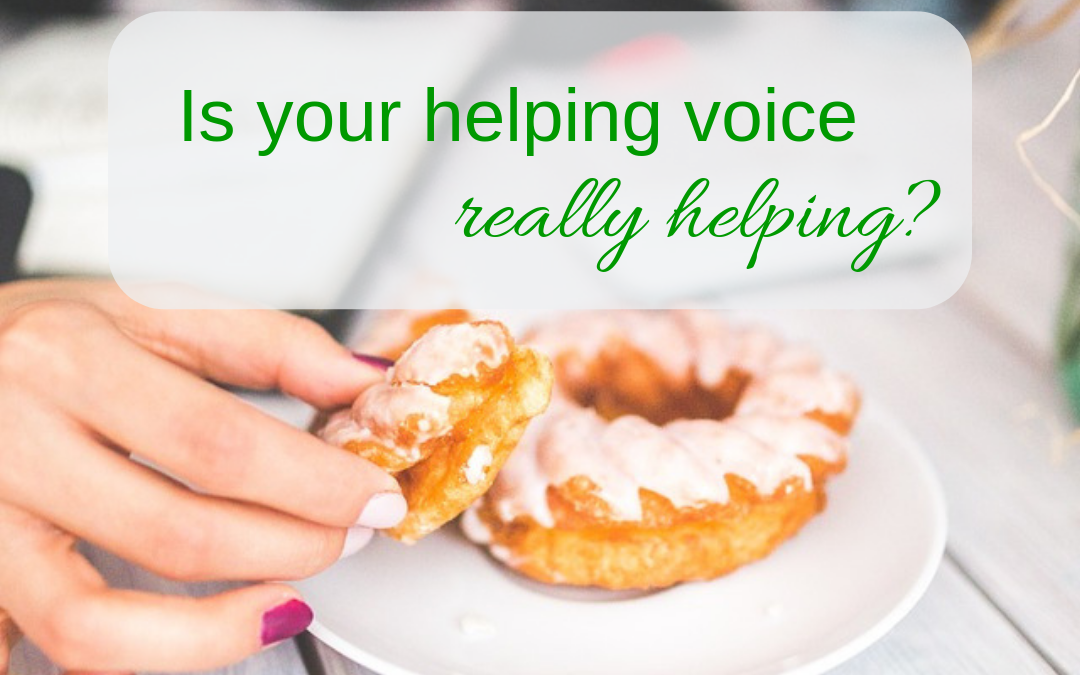
by Lucy | Feb 12, 2019 | Nutrition Questions Answered, Well Balanced Wisdom
You know that little internal conversation you have when staring at the buffet table, open bar or other indulgent food (or beverage) choice? There’s often opposing voices or thoughts going through our minds such as “it’s not that bad, “or “you know, you really don’t need that…”
You are normal
The good news, you are not crazy if you are hearing voices too! In fact, most of us have an inner helping and sabotaging voice. I think of it as friends versus an accomplice. Our friends help us when we feel down by saying comforting words that are uplifting and encouraging like this exchange with my best friend, Gretchen:
Me: I have a craving to quit my job, eat icing out of a plastic tub, and drink a margarita. Apparently, I’m feeling stressed…
G: Is it weird that we have all the same stress things? LoL
Me: Hahaha no, makes me feel less strange. And probably just confirms the soulmate best friend thing 😛
G: What’s got you so stressed?
Me: It’s the story I’m making up around people canceling or rescheduling last minute (clearly appointments with me don’t matter… Yada yada yada)
G: I’m sorry babe. I know that gets to you. You are amazing and important. Everyone overbooks and overdoes this time of year. That’s all it is.
See how Gretchen affirmed my feelings and gave me a chance to process through my negative thoughts? On the flip side, my thoughtful office mate, Richard, is more of an accomplice. When I told him that I was stressed out and craving sugar and/or booze he offered me animal crackers with icing and a beer or wine from the mini fridge. Not that he was purposely trying to sabotage me! On the surface, it sounds like those external stimulants or numbing agents are the cure to our problems, but we typically feel worse about ourselves after using comfort foods to “feel better.”
The answer is in you
I can tell you in moments of stress nothing outside of us can make what’s going on inside feel better. Sure, the chocolate may light up some happy hormones in your brain which could temporarily take away the sadness. However, often when we turn to food or a drink to deal with negative feelings those choices cause guilt or shame, which leads to the downward spiral of making more unhealthy choices.
Recently, while speaking with the client, she mentioned when she eats ice cream with her son in the evening or on weekends her sabotaging voice will say “it’s OK, you’ll do better tomorrow.” I asked, “what does your helping voice say in opposition?” She responded, “I tell myself ‘you know you’re already gaining weight and you don’t really want to gain more weight’.”
Did you notice her helping voice sounds super judgmental?
Is that helpful?
Instead, I asked, if her friend called and explained she was feeling upset and was about to eat a pint of Ben & Jerry’s ice cream “what would you say to a friend you know is trying to lose weight?” She had much more supportive words for her friend that did not include justifying or shaming her choice to eat ice cream.
Food for thought
What kind of stories is you’re sabotaging voice telling you? When do you notice yourself reaching for food or a drink to soothe your negative emotions?
How can you respond to these cravings as a friend instead of an accomplice?
Looking for a friendly dietitian to help you sort out your food cravings? We can help 🙂



